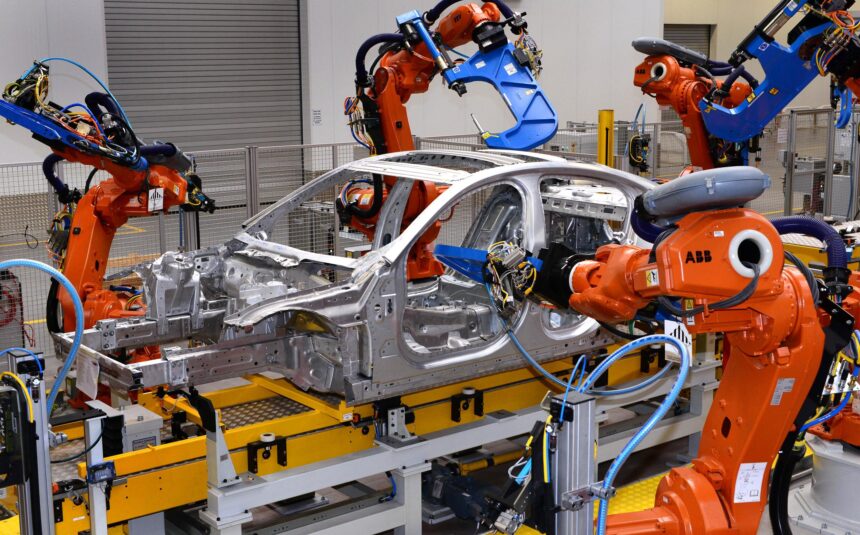The automotive industry has long been caught in a dilemma: should engineers prioritize performance and power, or should they focus on fuel efficiency and sustainability? This ongoing battle has shaped car engineering for decades, influencing the design, technology, and features of modern vehicles. As consumers become increasingly conscious of both power and economy, automakers must strike a balance that meets both expectations.
The Evolution of Car Engineering
Car engineering has undergone significant transformations over the years, driven by technological advancements and changing consumer demands. In the early days of the automobile, raw power was the primary focus, with large-displacement engines dominating the market. However, as fuel prices fluctuated and environmental concerns grew, the industry had to adapt by improving fuel efficiency without compromising performance.
Today, advancements in aerodynamics, lightweight materials, and hybrid technologies are reshaping the automotive landscape. Engineers are continuously exploring ways to enhance fuel efficiency while maintaining the speed and power that car enthusiasts crave. As a result, the industry has seen a surge in high-performance yet eco-friendly vehicles.
Fuel Efficiency and Its Rising Importance
Fuel efficiency has become a top priority for automakers and consumers alike. With rising fuel costs and stringent government regulations on emissions, manufacturers are focusing on developing vehicles that consume less fuel while delivering optimal performance. Innovations such as turbocharging, direct fuel injection, and variable valve timing have significantly improved the fuel economy of modern cars.
Electric and hybrid vehicles have further revolutionized the concept of fuel efficiency. By integrating electric power with traditional internal combustion engines, hybrid cars offer an excellent balance between economy and power. Additionally, the rise of fully electric vehicles (EVs) has eliminated fuel consumption altogether, reducing reliance on fossil fuels and decreasing environmental impact.
The Role of Performance in Modern Vehicles
Despite the push for fuel efficiency, there remains a strong demand for high-performance vehicles. Many consumers still prioritize acceleration, top speed, and engine power when choosing a car. Sports cars, muscle cars, and performance-oriented SUVs continue to thrive in the market, demonstrating that raw power remains a crucial aspect of car engineering.
To meet both power and economy demands, automakers are incorporating advanced technologies such as lightweight materials and aerodynamic enhancements. These innovations allow vehicles to maintain high performance while optimizing fuel consumption. For instance, turbocharged engines provide more power from smaller displacements, improving both acceleration and efficiency.
Technological Innovations Bridging the Gap
Recent advancements in automotive engineering have allowed manufacturers to bridge the gap between fuel efficiency and power. Some of the most groundbreaking technologies include:
1. Turbocharging and Direct Injection
Turbocharged engines use exhaust gases to increase air intake, improving combustion efficiency and boosting power output. Direct fuel injection ensures that fuel is delivered precisely where it is needed, maximizing efficiency without sacrificing performance.
2. Lightweight Materials
The use of materials such as carbon fiber, aluminum, and high-strength steel reduces vehicle weight, enhancing both performance and fuel economy. Lighter cars require less power to move, which results in improved efficiency and reduced fuel consumption.
3. Hybrid and Electric Powertrains
Hybrid vehicles combine gasoline engines with electric motors, offering better fuel efficiency and lower emissions. Fully electric vehicles eliminate fuel consumption altogether, relying on battery technology to deliver power while maintaining environmental sustainability.
Challenges in Achieving the Perfect Balance

While car manufacturers are making strides in blending power with fuel efficiency, several challenges remain. One of the biggest hurdles is cost. Advanced technologies such as hybrid systems, turbocharging, and lightweight materials often come with higher production expenses, making fuel-efficient and high-performance vehicles more expensive for consumers.
Additionally, the infrastructure for electric and hybrid vehicles is still developing. Charging stations, battery recycling, and energy efficiency improvements are necessary to make these cars a viable alternative for a broader audience. Until these challenges are addressed, many consumers may hesitate to switch from traditional gasoline-powered vehicles.
The Future of Car Engineering: What Lies Ahead?
As the automotive industry continues to evolve, the future of car engineering will likely be defined by further integration of fuel efficiency and performance. Emerging technologies such as hydrogen fuel cells, solid-state batteries, and artificial intelligence in engine management systems promise to push the boundaries of what vehicles can achieve.
Automakers will continue to innovate, striving to develop cars that offer exceptional power while minimizing fuel consumption. The growing popularity of hybrid and electric vehicles, coupled with advancements in autonomous driving and smart mobility solutions, will redefine the way people think about transportation.
Conclusion
The battle between power and fuel efficiency is far from over. As consumer preferences and environmental regulations evolve, car manufacturers must adapt by developing vehicles that satisfy both performance enthusiasts and eco-conscious drivers. With ongoing technological advancements, the future of car engineering looks promising, offering a perfect blend of speed, power, and fuel efficiency.
Ultimately, the future of car design will be shaped by innovation, sustainability, and the quest for an optimal driving experience. Whether powered by gasoline, electricity, or alternative fuels, the cars of tomorrow will continue to push the boundaries of engineering, offering drivers the best of both worlds.
